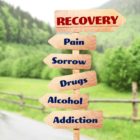
Opinion: Why Self-care Isn’t Enough: Resilience for Trauma-informed Professionals
|
The well-established finding that a majority of youth in the juvenile justice system have been exposed to trauma has led to a clarion call for the implementation of trauma-informed practices.
However, to date, less attention has been paid to the importance of providing juvenile justice staff with the tools needed to carry out trauma-informed practices in ways that protect them from the potential risks associated with this work. In fact, recognition of such risks is relatively new; only in 2013 did the official diagnosis of post-traumatic stress first recognize that secondary exposure to another person’s trauma is a bona fide type of traumatic experience. Such secondary traumatic stress (STS) — also termed vicarious trauma or compassion fatigue — has mostly been the focus of attention among mental health professionals and first responders.
But well known in the juvenile justice community — even if not well recognized outside of it — is that working with traumatized youth and families, reading their extensive trauma histories, performing trauma screenings and delivering trauma-informed programming all bring us into contact with thoughts, feelings and images that can be difficult to put aside at the end of the day. What can be done? Self-care: strengths and limitations
To date, most of the strategies designed to prevent or intervene with STS have been focused on self-care and wellness promotion, which are certainly of value.








